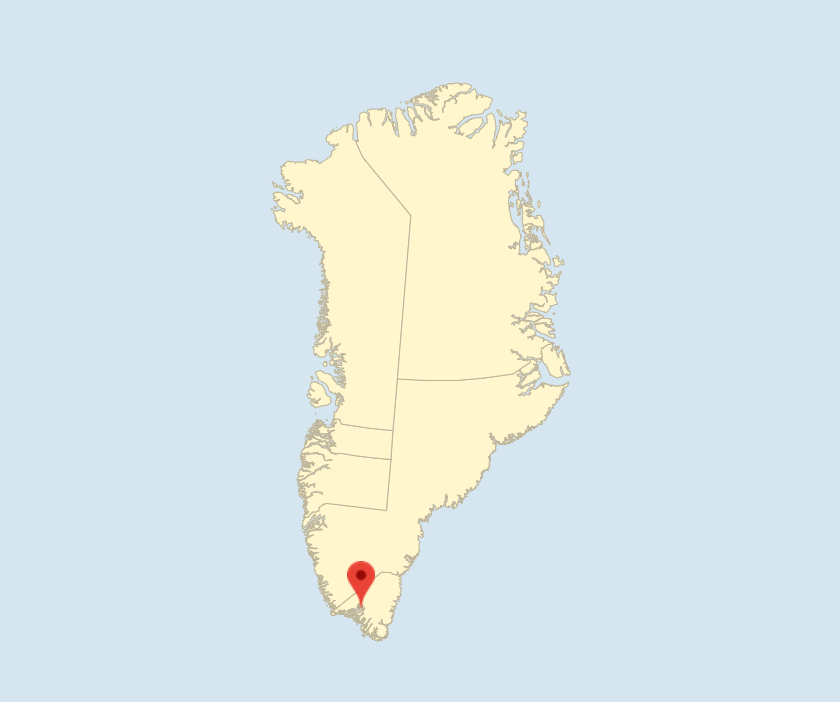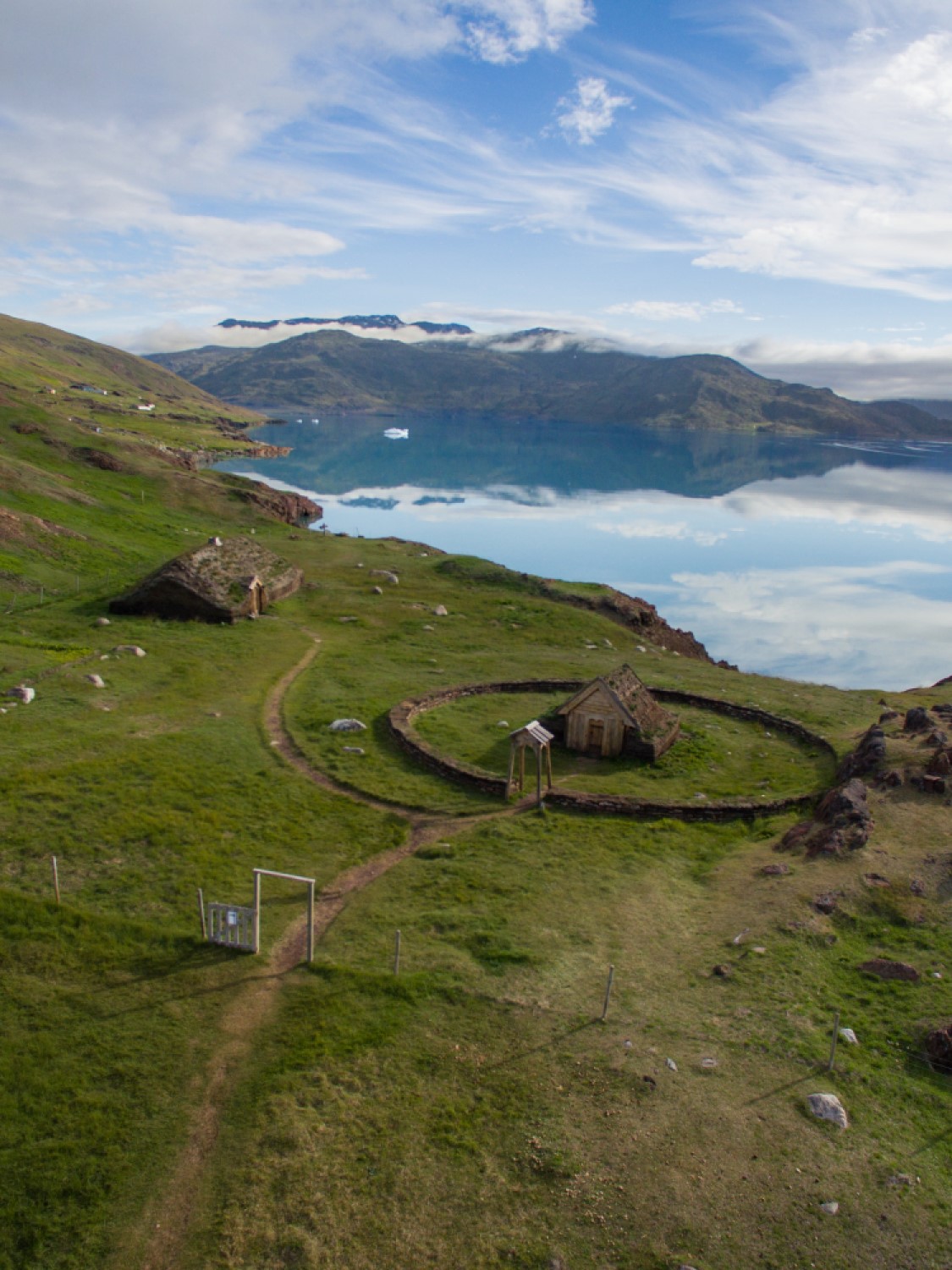

ANINGAAQ R. CARLSEN/VISIT GREENLAND, 2017
In 1783, Norwegian Anders Olsen, his Greenlandic wife Tuperna and their family settled down as the first farmers after the Norse. They chose the Norse diocese of Garðar (Igaliku) as their settler place since it offered some of Greenland’s richest grassland with good access to the surrounding resources. Although almost 150 years passed before Greenlandic sheep farming started in earnest, the distinctive farming tradition was founded by the descendants of Anders Olsen at Igaliku: grazing livestock – mostly sheep – which was near impossible and only sustainable through in-depth knowledge and intensive use of the resources of the sea and the land in the Arctic outfield.
The parallels to the farming and lifestyle of the Norse are obvious and natural. Therefore, the Norse and new Greenland farms always lie side by side on the 1,000-year-old green fields of the Arctic mountain landscapes. Due to the relatively late development of Inuit farming and early statutory protection of ancient monuments, the vast majority of Norse ruins are still preserved in the landscape. This unique circumstance, in which a near-intact fossil cultural landscape from the Middle Ages is superposed and maintained by a continuing Greenlandic farming tradition, was recognised in 2017 when UNESCO included the most central parts of Østerbygden (Eastern Settlement) on the World Heritage List under the title: Kujataa, Greenland: Norse and Inuit farming on the brink of the ice sheet.
Further reading
- Agriculture in Greenland
- Building customs and architecture
- Hans Egede and the work for the mission service
- Locations with agriculture and sheep farming
- Museums of cultural history and heritage
- The Inuit culture, precolonial period
- The Norse
- The ice-free landscapes
- The ice sheet
- Towns and settlements
Read more about Nature and landscape in Greenland
